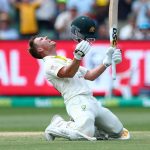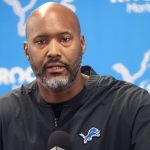Previewing upcoming qualifying-offer decisions ahead of MLB free agency

A former top prospect, Pérez has bounced around the league but consistently put up below-average results after some early-career success. He returned to his original organization last offseason, inking a $4M deal with the Rangers after a pair of rough seasons in Boston. That proved to be one of the better buy-low moves of the winter, as Pérez made 32 starts and soaked up 196 1/3 innings. He posted a 2.89 ERA, a top-25 mark among hurlers with 100+ innings. Despite pitching in the majors for more than a decade, he’s only entering his age-32 season.
If the Rangers are confident Pérez can come close to replicating his 2022 production, then a QO would be an easy call. Yet it’s fair to wonder how sustainable the southpaw’s success is. He posted an ERA north of 4.00 every year between 2014-21. He didn’t experience any kind of velocity bump, nor did his strikeout and walk profile change. Pérez only punched out 20.6% of opponents on a meager 8.4% swinging-strike rate. He did induce ground balls at a quality 51.4% clip, but he’s previously posted strong grounder rates without finding much success keeping runs off the board. Pérez made some small tweaks to his repertoire, using his sinker more against right-handed batters while leaning a bit more heavily on his cutter against lefties. Without a massive overhaul or velocity spike, though, it’s hard to know how much of his improved results truly represent a step forward.
Rizzo inked a two-year, $32M guarantee to return to the Yankees in spring training. The deal allowed him to opt out of the final $16M after this season, and the first baseman now looks as if he’ll do so. After a couple of fine but unspectacular years, Rizzo bounced back with a 32-homer showing for the first time since 2017. He only hit .224, but that’s largely due to a career-worst .216 batting average on balls in play. Few hitters in baseball were shifted against more often, and the upcoming limitations on shifting should help him find a few more base knocks. Even if the shift ban doesn’t lead to a jump in performance, his .224/.338/.480 mark through 548 plate appearances checked in 32 points above the league average by measure of wRC+.
Heading into his age-33 campaign, Rizzo’s likely limited to two- or maybe three-year offers. Those should be at annual rates at least approaching the value of the qualifying offer. It seems unlikely Rizzo would accept a QO. After all, in order to be eligible for the qualifying offer, he’d first have to decline a $16M salary for next year. Perhaps he’d be content to take the accompanying $3.65M pay bump before re-testing free agency after 2023, but he’d presumably prefer a new multiyear arrangement. Even if he does accept the QO, the Yankees could find that a reasonable investment, as Rizzo’s high-contact lefty bat plays well in their ballpark and in a lineup that otherwise skews toward the right side.
Taillon has spent the past two years in the Bronx after coming over from the Pirates via trade. New York rolled the dice at the time, surrendering a few solid prospects for a pitcher who’d missed the 2020 season after undergoing the second Tommy John surgery of his career. Taillon rewarded their faith, posting the No. 3/4 starter-type numbers he had throughout his time in Pittsburgh. Over the past two years, the right-hander owns a 4.08 ERA through 61 starts in a hitter-friendly environment. He’s punched out a slightly below-average 21.9% of opponents but only walked 5.7% of batters faced, holding the opposition to a .242/.290/.426 line.
Heading into his age-31 season, Taillon is one of the better options in a class full of mid-rotation starters. He averages around 94 mph with his fastball, throws plenty of strikes and has flashed the ability to both miss bats and keep the ball on the ground at times in his career. Taillon never became the ace some may have expected when he was drafted second overall back in 2010, but he’s a rock-solid league-average starter. Clubs may have some trepidation long-term about the two Tommy John procedures in his past, but the only injured list stint he’s required in the last two years was a two-week absence in September 2021 for an ankle issue. The Yankees do have a number of rotation options, but there’s enough uncertainty with players like Luis Severino, Domingo Germán and Clarke Schmidt they’d seem content to welcome Taillon back if he accepts the QO.
Walker’s going to decline a $6M player option in favor of a $3M buyout, leaving the Mets to decide whether to follow up with a QO. Signed over the 2020-21 offseason, the right-hander had a somewhat disappointing first season in Queens, posting a 4.47 ERA. He rebounded with a strong 3.49 mark in 157 1/3 innings this past season, taking the ball 29 times despite a minor early-season IL stint due to shoulder bursitis. He didn’t overpower opponents, striking out a slightly below-average 20.3% of batters faced, but he consistently threw strikes and got ground balls at an above-average 46.2% clip.
Heading into his age-30 season, Walker looks the part of a useful mid-rotation starter. He battled some injury issues early in his career but has mostly been healthy the last two years. He averages a bit under 94 mph on his fastball, is effective against hitters from both sides of the plate and is coming off arguably the best season of his career. Walker gives up a decent amount of hard contact, but that’s perhaps not as concerning for a Mets team that plays its home games in a pitcher-friendly ballpark as it would be to some other clubs. The Mets have a number of impending free agents in the rotation and as high a spending ceiling as any team in the game, so they could be content to absorb a heavy one-year salary for Walker.
Long shots
Entering the season, Clevinger looked like one of the higher-upside options in the class. He was coming off a 2021 campaign lost to Tommy John surgery, but he’d been excellent for the Indians and Padres from 2017-20. This year didn’t go well, though. Clevinger’s stuff was notably down from his pre-surgery form, and his results were below-average across the board. He finished the season with two abysmal playoff starts, and the Padres are probably content to let him sign elsewhere.
Eflin had a solid case for a three-year deal midway through the first half. The typically effective right-hander then lost two months with a right knee injury, an unfortunate continuation of knee troubles that have plagued him since before he began his career. Eflin has undergone multiple knee surgeries in the past, and while he didn’t need to go under the knife this year, the absence kept him to working in shorter stints out of the bullpen for the stretch run and the playoffs. Coming off that platform season, it’s hard to see the Phillies offering a salary approaching $20M.




